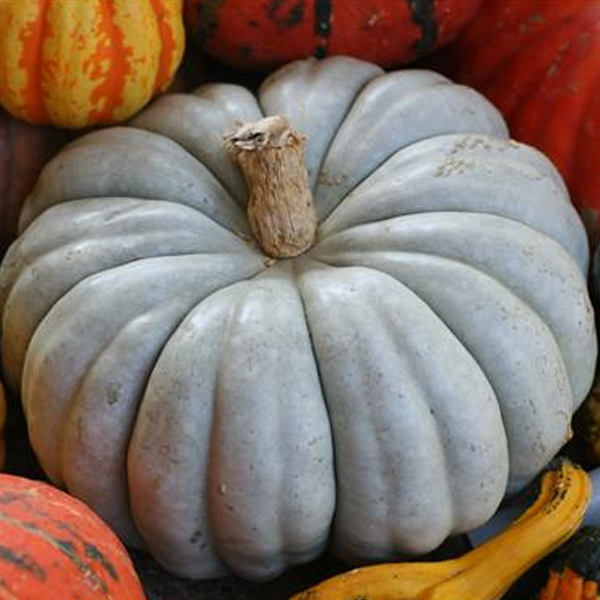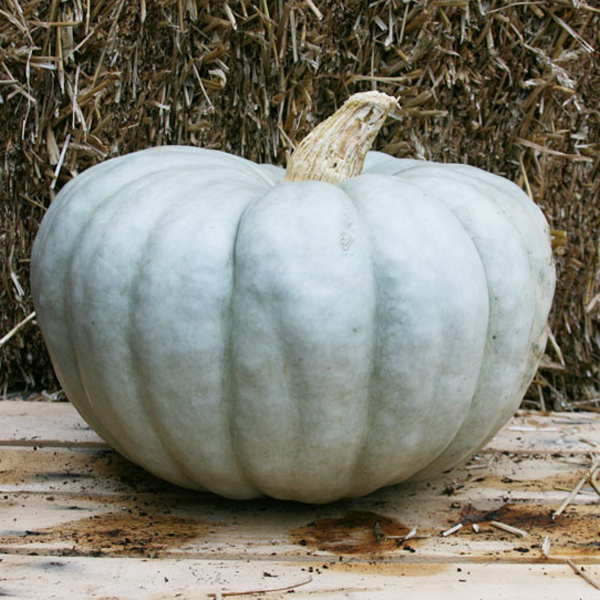- Historical context: The Blue Jarrahdale pumpkin is a unique variety of pumpkin known for its distinctive blue-grey skin and sweet, orange flesh. It is a type of Cucurbita maxima.
- Geographical origination: This pumpkin variety originates from Australia, specifically from the region of Jarrahdale in Western Australia.
- Relevant cultural significance: The Blue Jarrahdale pumpkin is highly valued in Australia for its unique appearance and culinary versatility. It is often used in traditional Australian dishes and is a popular choice for autumn decorations.
- Time period of discovery: The exact time period of discovery is not well-documented, but it has been cultivated in Australia for many decades.
- Original habitat: The original habitat of the Blue Jarrahdale pumpkin is the temperate regions of Western Australia, where it thrives in well-drained soils and a sunny climate.
- Notable historical uses: Historically, the Blue Jarrahdale pumpkin has been used for both culinary and ornamental purposes. Its sweet flesh makes it ideal for pies, soups, and roasting, while its unique color and shape make it a popular choice for autumn displays.
- Ideal temperature range: The ideal temperature range for growing Blue Jarrahdale pumpkins is between 70°F and 85°F (21°C to 29°C).
- Soil type: They prefer well-drained, fertile soil with a pH level between 6.0 and 6.8.
- Sunlight requirements: Full sun is essential for optimal growth, requiring at least 6-8 hours of direct sunlight per day.
- Watering needs: Consistent watering is crucial, especially during the flowering and fruiting stages. However, avoid waterlogging as it can lead to root rot.
- Planting season: Planting should be done in late spring to early summer, after the last frost has passed.
- Germination time: Seeds typically germinate within 7-10 days under optimal conditions.
- Growth cycle duration: The growth cycle from planting to harvest is approximately 100-120 days.
- Common pests and diseases: Common pests include squash bugs, cucumber beetles, and aphids. Diseases such as powdery mildew and downy mildew can also affect the plants.
- Companion planting advice: Good companion plants include corn, beans, and radishes. Avoid planting near potatoes and other members of the nightshade family.
- Common challenges and solutions: Challenges include pest infestations and fungal diseases. Regular monitoring, proper spacing, and crop rotation can help mitigate these issues.
- Nutritional values: Blue Jarrahdale pumpkins are rich in vitamins A and C, potassium, and dietary fiber. They are low in calories and fat, making them a healthy addition to any diet.
- Health benefits: The high vitamin A content supports eye health, while the antioxidants present help in reducing inflammation and boosting the immune system.
- Culinary uses: The sweet, dense flesh of the Blue Jarrahdale pumpkin is perfect for making pies, soups, and roasted dishes. It can also be used in baking and as a filling for ravioli.
- Medicinal uses: While not commonly used in traditional medicine, the nutritional profile of the Blue Jarrahdale pumpkin supports overall health and wellness.
- Other unique advantages: In addition to its culinary and nutritional benefits, the Blue Jarrahdale pumpkin's unique appearance makes it a popular choice for decorative purposes during the autumn season.








